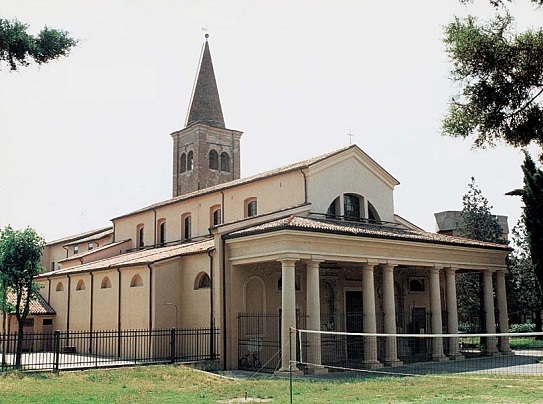
Basilica of St. Rufillus, patron saint of the town
The church is named after St. Rufillus, the first Bishop of the dioceses of Forlimpopoli, who lived in the 4th century AD and is patron of the town. The oldest construction phase of the church dates from between the 6th and the 8th-9th centuries AD. From the 10th century until the second half of the 14th century the abbey was entrusted to a community of Benedictine monks, before passing under the jurisdiction of the Chapter of St. Peter’s of Rome. The first major transformation of the church complex probably dates from the second half of the 15th century. However, it was between 1819 and 1821 that the abbey was extended and renovated in neoclassical style, based on a design by Forlì-born architect Luigi Mirri. The church boasts an artistic heritage of considerable importance including the two 16th-century Istrian stone sepulchres of the lords of Forlimpopoli, Brunoro I and Brunoro II Zampeschi, now under the pronaos at the entrance to the temple. It also houses pieces by Luca Longhi of Ravenna, Francesco Menzocchi of Forlì, Giuseppe Marchetti of Bologna and local artist Paolo Bacchetti. Outside, at the base of the lovely Lombard-style bell tower (1521) is the walled head of a marble lion dating from the Roman period. In 1964 the remains of proto-bishop Rufillus, that Cardinal Egidio d’Albornoz had arranged to be moved to nearby Forlì in 1361, were returned to the city. In 1999, the church was elevated to the status of minor basilica.
SB
(photo Gabriella Fabbri)


